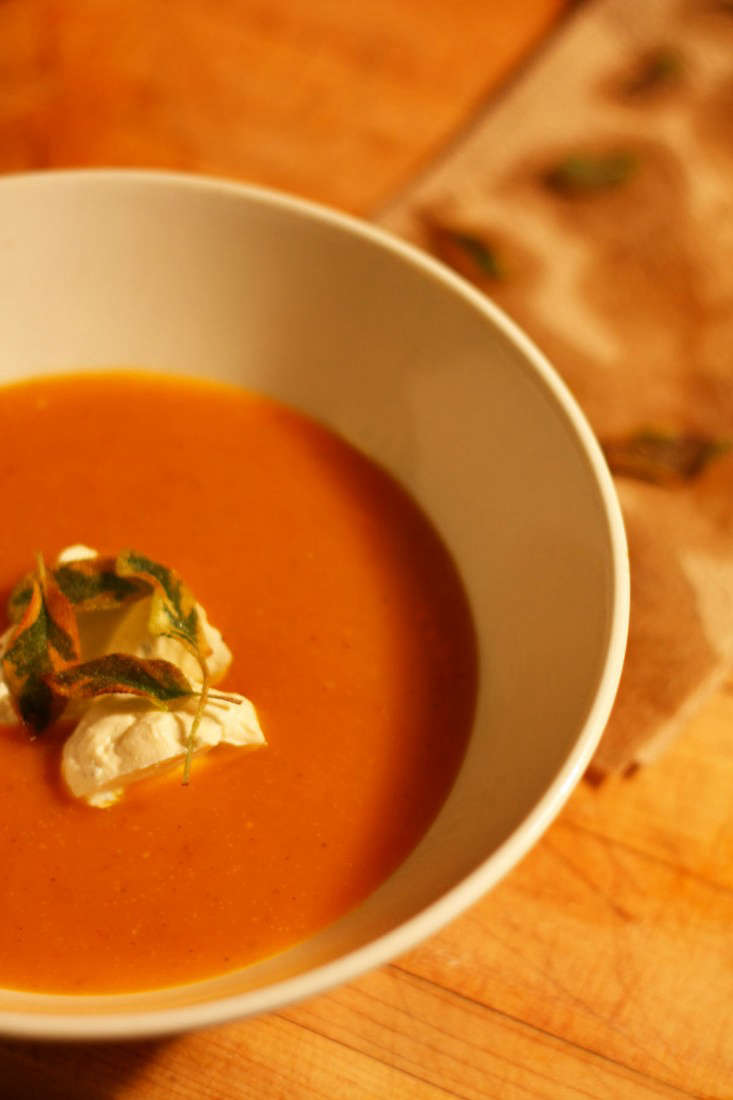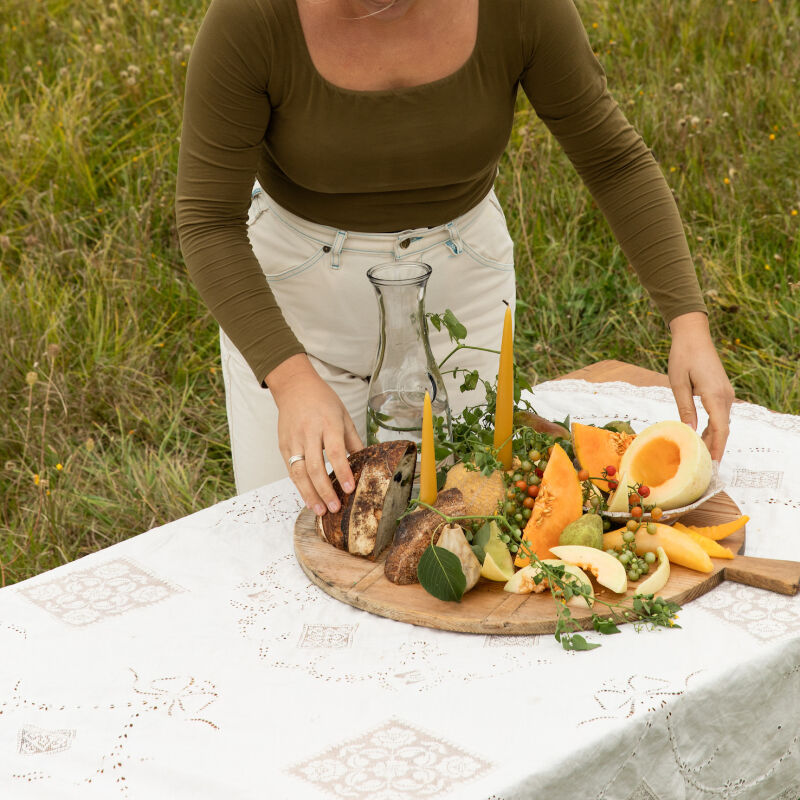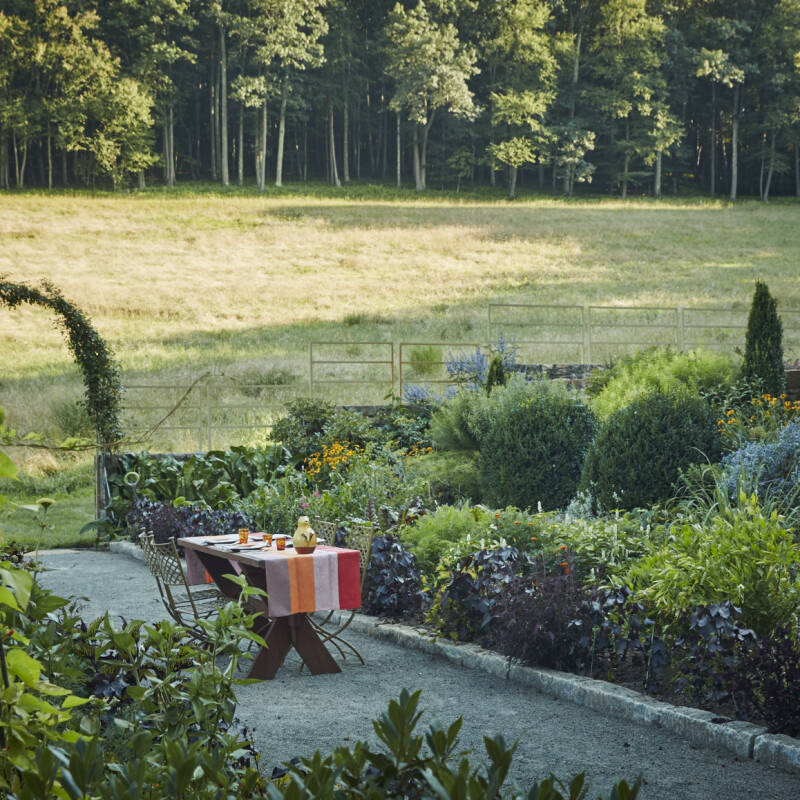The funny thing about growing your own produce is that suddenly the October-November obsession with pumpkins and squash makes sense. North America is overflowing with them.
How best to eat winter squash? Hard to choose. But if you’d like addictive Spiced Squash for supper (or dessert), read on for step-by-step instructions:
Photography by Marie Viljoen

It’s only when you have watched your own crop mature through the endless days of summer from tender green pinprick into the solid orange handful that you cut from its yellowing stalk, that you really appreciate this reward at the close of the growing season.

It took an impulse buy from a seed catalog to turn my own container gardening mind to thoughts of autumn’s super-fruit. The previous year, I had planted the seeds of miniature watermelon, and was able to harvest perfect little watermelons in summer. I realized that if this was possible, so were pumpkins. Or in my case, smaller winter squash. Pots do have their limits.

The ‘Gold Nugget’ squash (from Botanical Interests, along with a gang of summer squash seeds, for kicks) were planted in late in May, and I picked the first perfect, one-pound squash in October. Under its tough skin was a beautiful layer of green. I roasted that first one without peeling, in thin slices that we ate entire, skin and all. Nutty, sweet. More followed.

Plant your own squash seeds beyond all reach of cold nights, which will stunt the plants’ growth— so when nights are reliably above 50°F (for our region that is around mid May) and grow them in full sun. Their pots should be relatively roomy, so 16 and 18 inches or more diameter and at least as deep. Sow three seeds per pot and thin out to the strongest plant over the next weeks.

As the season stretches and the plants’ enormous, prickly leaves develop, their watering and fertilizing needs will increase. When the top quarter-inch of soil is dry, soak thoroughly (allow water to run from the drainage holes). I fertilize with Espoma’s Garden Tone granules, monthly, and with supplemental liquid seaweed fertilizer when watering.
Harvest winter squash when they have turned color and their stalks are beginning to wizen and dry. By this time their foliage may have yellowed and collapsed.

What follows? These are the months of roasted squash with pinches of brown sugar and squeezes of lemon; soup laced with reduced orange juice, spiked with toasted coriander, and topped with crisp sage leaves; puréed squash sweetened with trails of maple syrup and kept in check with fresh lime juice, and of bourbon cheesecake swirled with cinnamon.

Growing up in South Africa, we often served squash and pumpkin as a traditional, sweetened side dish with Sunday lunch. Winter squash also typically accompany farm-style dishes: think roast lamb, slow-cooked venison, and chicken pies.
To satisfy my craving for this comfort food, I developed a riff on a Turkish dessert, with cubes of pumpkin or other winter squash poached very slowly in sugared water perfumed with aromatics. It can be served either sweet, at the end of a meal, or as a more complex side dish, with citric tartness for balance. And yes, for Thanksgiving, it checks every box.

Spiced Squash – sweet or sour
There is no oil or butter in this recipe. The spiced squash is so rich and satisfying that none is required For a dessert version, omit the spices, the salt, and the pepper. If deliciously perfumed yuzu is not available use clementine peel and lemon juice.
Fresh yuzu are available seasonally from Flavors by Bhumi for $129/5lbs (share a box with a friend).
Ingredients:
- 2 pounds peeled and cubed Gold Nugget squash (or butternut, or pumpkin)
- 2 cups water, plus extra
- 4 ounces brown sugar, or maple syrup
- 1 fresh yuzu leaf (or lemon leaf)
- 1 3-inch strip of yuzu peel (substitute clementine peel)
- 2 tablespoons yuzu juice (substitute lemon juice)
- 1 teaspoon ground sumac
- 1/2 teaspoon ground cumin (for a dessert version, use 2 sprigs fresh eastern red cedar, Juniperus virginiana)
- 1/8 teaspoon salt
- Pepper
Arrange the squash in a single layer in a saucepan. Add the water. If it does not cover the squash, add more until the pieces are just submerged. Add the sugar or maple syrup, the leaf and the citrus peel. Shake the pan gently to distribute the sugar and aromatics, and bring the liquid to a very brief boil over medium-high heat. Immediately lower the heat and continue cooking very gently at a simmer, uncovered, until the water has almost evaporated—this may take around 50 minutes. Shake the pan gently every now and then to prevent the squash from sticking to the bottom.
When the liquid has all cooked off, add more water to reach halfway up the sides of the squash. Now add the yuzu or lemon juice, and the spices, Continue cooking at a simmer until the liquid is syrupy. Shake the pan gently again and tilt to spoon the juices over the squash pieces. Season with salt and pepper, and taste. Cook some more until all the liquid disappears, taking care not to scorch.
Transfer the spiced squash to a serving dish. Eat warm (if spiced and savory) or cool for a dessert
Yearning for more squash? For our other favorite recipes, see:
- Reader Recipe: Butternut Squash Lasagne
- Pumpkin Soup With an Unexpected Twist
- Easy Squash Blossom Tempura








Have a Question or Comment About This Post?
Join the conversation